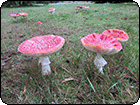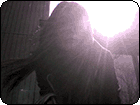 photo by splunge
photo by splunge
 photo by TheophileEscargot
photo by TheophileEscargot
 photo by Kronos_to_Earth
photo by Kronos_to_Earth
 photo by ethylene
photo by ethylene
Comment Feed:
♦ RSS
Where do dust bunnies come from?
Dear Cecil:
Where do "dust bunnies" (or, depending on size, "dust rhinos") come from? You know, those tumbleweed sort of things that you accidentally pull out from under your bed when you're looking for dirty socks.
Why do they form? Is it seasonally related? Any relationship to the presence of pets or small children? Can they be prevented? --Mystified in Madison, Wisconsin
Dear Mystified:
Proud though Cecil is of his contributions to science, he recognizes that he stands on the shoulders of giants. Journalist Penny Ward Moser, for instance.
In November of 1986 Ms. Moser squandered eight full pages in Discover magazine on this ridiculous topic. This surely qualifies as some sort of landmark in the history of journalism.
Among other things, she persuaded her editors to let her send her dust bunnies out for--honest--laboratory analysis. Her findings were as follows:
(1) Dust bunnies consist of any number of things, including pet and human hairs, pillow feathers, insect parts, clothing bits and other fibers, soil, mold spores, meteor dust, pollen, yeast, and God knows what else.
(2) They form under your bed because that's where they find "still air pockets," where they can grow unmolested. You want to get rid of them, get rid of the air pockets--e.g., plop ze mattress on ze floor.
Dust bunnies may also be found in ducts and vents, where they get blown by air currents, or stuck to spiders' webs on ceilings or in corners.
They're arguably more prevalent in winter, because the windows are closed and the breeze doesn't disperse them. Keep those windows open year-round and I guarantee you'll never complain about dust bunnies again.
By way of epilogue, I might mention that Ms. Moser was able to parlay her story (and others in a similar vein) into a gig as a contributor to Sports Illustrated.
I guess they figured if you can write about dust balls, you're certainly qualified to deal with the likes of Brian Bosworth. Truly, the woman is an example to us all.
--CECIL ADAMS